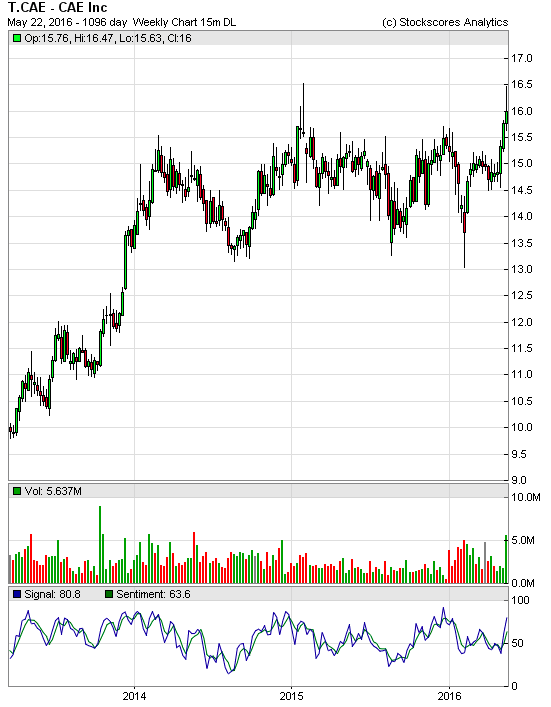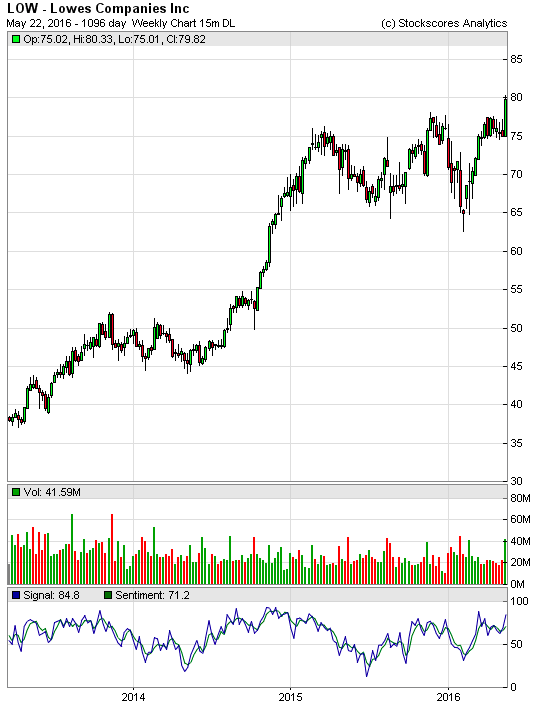
Tyler highlights seven Ways to Take Emotion Out of Trading plus using his favorite scan for finding long term position trades presents two stocks that look like they can outperform in the months ahead.

![]()
-
In This Week’s Issue:
– Stockscores Webinars – Three this week!
– Stockscores’ Market Minutes Video – How to Trade Reward for Risk
– Stockscores Trader Training – How to Overcome Trading Emotions
– Stock Features of the Week – Stockscores Simple WeeklyWebinar – Saturday’s recording plus three coming this week
I did a webinar this Saturday which focused on three of my trading strategies, I think it is a great way to understand the process and time required to apply my approach.You can watch a video of this webinar on Youtube by clicking here.
Three more webinars this week:
Monday – How to Grow Your Retirement Portfolio
6pm – 7pm PT (9pm – 10pm ET)Thursday – How to Make Stock Trading a Career
6pm – 7pm PT (9pm – 10pm ET)Saturday – How to Get the Most Out of Stockscores.com
11am PT (2:00 pm ET)These webinars are all free, register for them by clicking here.
Stockscores Market Minutes Video – How to Trade Reward for Risk
Can buying a stock at a higher price actually be more profitable? Yes it can, this week I show you how.Click Here to Watch To get instant updates when I upload a new video, subscribe to the Stockscores YouTube ChannelTrader Training – How to Overcome Trading Emotion
I think that many traders have a hard time believing that they can make money by buying a stock and waiting. Most of us are not taught to make our money work for us but instead that we must work for our money. Go to a job, put in the time and you get a pay check. Work hard, your pay checks will grow. But the thought that you can make money by putting your feet up is a difficult thing for most to grasp.With that mental programming, most of us have difficulty holding on to our strong stocks and letting the profits grow. If we buy a stock at $1 and it goes up to $1.20 in a couple of days we are likely to sell. In some ways we think of this fast return as good luck, not much different than buying a winning lottery ticket. We have a fear that someone is going to figure out that we have benefited from a mistake and so we better get out now before we get discovered.
This thinking is strengthened when we own a marginal stock and it goes down as quickly as it went up. If we take a marginal trade we should expect marginal results but somehow we only remember the negative feeling of watching a paper profit turn in to a loss. We tell ourselves that next time we will sell at the first sign of weakness and crystallize the gain. Avoiding pain is human nature.
Our next trade is of higher quality but we sell it on a short term weakness and lock in a quick but relatively small profit. While lost in self-congratulations we realize that someone named Murphy is writing the laws of trading and we watch the stock march ever higher with us eating the stock’s dust. We have jumped off of a high speed bus that is headed for Profit City.
So what is behind this destructive behavior? It is that deep routed emotional response to danger that keeps us out of trouble but also makes us avoid a greater feeling of fulfillment.
Fear is what makes us sell our winners too early and hold our losers too long.
The best traders are not afraid of holding on to strong stocks, they are afraid of holding on to losing stocks. What do you do?
If you are a normal human being, you do the opposite. Think about the last loser that you owned. As the stock fell lower and lower, what was it that you told yourself over and over?
“It will bounce back eventually, I will just be patient.”
What your subconscious mind was really saying was, “It is much too painful to sell this loser and see that loss of my hard earned capital. I will hold on with the hope that it goes back to what I paid for it and then I will sell.” And of course, it continued lower because there was something wrong with the company and it deserved to go lower.
So what can be done to fight our destructive minds? How can we program ourselves to hold on to our winners and dump the losers? How can we trade without fear?
Here are my Seven Ways to Take Emotion Out of Trading:
Trade Quality
Our fears are confirmed when we enter marginal trades. If you only trade the best opportunities you will trade less but you will have greater success. This will put you on the road to fearless trading and help you to simplify the trading approach. Write down your rules and do nothing if every rule is not satisfied. When you consider a stock, look for a reason to avoid the trade. If you can’t find one then you have a trade worth taking.Buy With Confidence
The rules that you trade with have to have a foundation of success. You have to believe in your rules or you won’t believe in holding the stock through the shakeout periods in the longer term up trend. Analyze and test the strategy until you have proven to yourself that it works. Then trade it slowly without a lot of risk so you can gain a greater level of confidence that it works.Don’t Watch the Scoreboard
Sports fans don’t spend a lot of time watching the scoreboard during a game, it only matters when the game is over. In trading, the scoreboard is the profit and loss figure for your account. If you focus on the scoreboard it is likely that you will lose sight of what is happening in the game. As a technical trader, all that matters to me is what the chart is telling me.Plan Your Losses
Before you enter a trade, figure out what needs to happen for you to consider the trade a loser. For me, that is a move through chart support; I plan to exit the trade when the stock goes through a psychological floor price on the chart. Understanding where that point requires some experience and knowledge but once you know how to identify support on the chart, plan your losses.Plan the Trade
I find it helpful to predict pull backs. My rational side knows that stocks cannot go straight up and that they must suffer pullbacks to recharge buyer interest and shake out weak holders. My emotional side feels fear when those pull backs happen. If I plan my trade and build in expectations for the counter trend pull backs I can deal with them better and have a greater chance of not succumbing to the fear when they do.Don’t Fall in Love
I don’t want to know too much about what a company is doing because I have found that the more I like a stock the more likely I am to not listen to the message of the market. There is a lot of bias in the information that we receive about companies and what they are doing. The ultimate arbiter of truth is the market itself; we should have a greater faith in the opinions of thousands of market participants than a few biased sources of information.Tolerate Risk
Without risk, there is no potential for return. To avoid trading with fear we have to be comfortable with the risk. If not, we will let fear guide our decisions and those decisions will probably be wrong. Therefore, do not take more risk on a trade than you are comfortable losing. Plan your losses based on how much you are willing to lose and let that determine the size of your positions.The Profit is in the Patience
When a trade is working, let it work for you. A business owner does not fire her best employee. A hockey coach does not send his best player to the minor leagues. A company does not stop making their best products. Hang on to your best stocks with the same attitude. Hold the stock until there is a rational reason to exit the trade rather than selling because it feels good. If you are taking quality trades and trading without fear, you will feel better over the long run.The time to get started on your reprogramming is now. Don’t expect to break habits built up over a life time in a couple of days. The battle against your fears is one that takes time win but with determination you can do it.
This week, I ran the Stockscores Simple Weekly market scan for both the US and Canada. This is my favorite scan for finding long term position trades. Here are two names that look like they can outperform in the months ahead.
1. T.CAE
T.CAE has been trending sideways under $15.50 resistance since 2014 but is now breaking out of that range with strong volume this week. Support at $14.50.

2. LOW
LOW is breaking out of a cup and handle pattern on the daily and has a strong weekly chart with support at $75. Historical yield is 1.42%

related from Tyler Bolhorn:10 Key Thoughts To Remember Now
References
- Get the Stockscore on any of over 20,000 North American stocks.
- Background on the theories used by Stockscores.
- Strategies that can help you find new opportunities.
- Scan the market using extensive filter criteria.
- Build a portfolio of stocks and view a slide show of their charts.
- See which sectors are leading the market, and their components.
Disclaimer
This is not an investment advisory, and should not be used to make investment decisions. Information in Stockscores Perspectives is often opinionated and should be considered for information purposes only. No stock exchange anywhere has approved or disapproved of the information contained herein. There is no express or implied solicitation to buy or sell securities. The writers and editors of Perspectives may have positions in the stocks discussed above and may trade in the stocks mentioned. Don’t consider buying or selling any stock without conducting your own due diligenc













